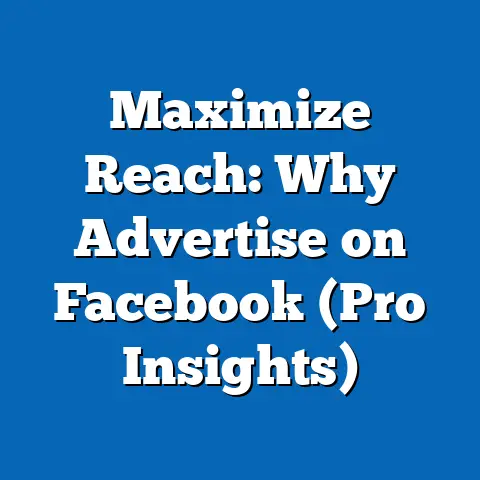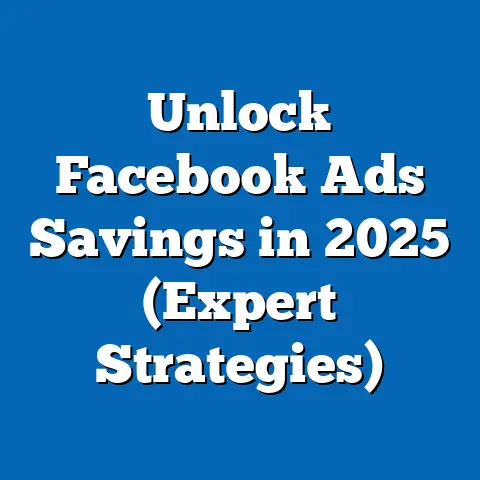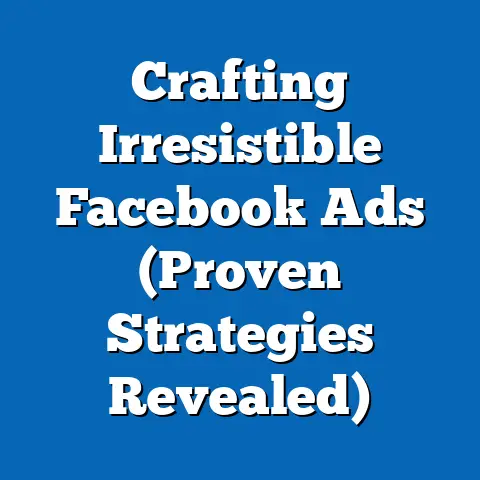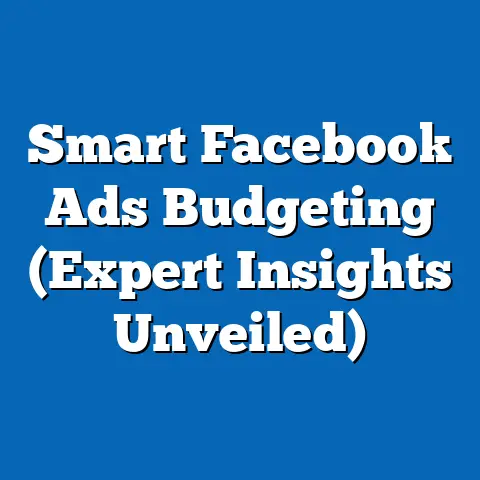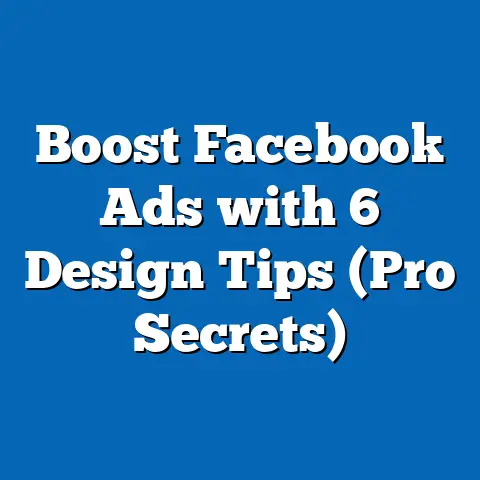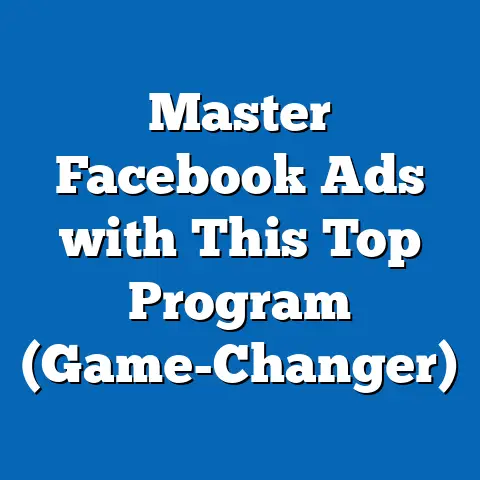Maximize Reach with Facebook Ads Keyword Tool (Expert Strategies)
Facebook. It’s the digital town square where billions connect, share, and discover. As a digital marketer, I’ve seen firsthand how this platform, with its sprawling user base and intricate algorithms, offers unparalleled opportunities to reach your target audience. But let’s be real, the marketplace is crowded. Standing out requires more than just a catchy image and a clever slogan. It demands a strategic approach, a deep understanding of your audience, and the right tools to guide you.
That’s where the Facebook Ads Keyword Tool comes in. Think of it as your secret weapon, your compass in the vast sea of Facebook advertising. It’s a vital resource for maximizing reach and engagement, and in this article, I’m going to share some expert strategies that will help you wield it like a pro. Whether you’re a seasoned marketer or just starting out, these insights will empower you to take your Facebook ad campaigns to the next level.
Understanding the Facebook Ads Keyword Tool
So, what exactly is this “Keyword Tool” I keep talking about? Let’s break it down.
The Facebook Ads Keyword Tool, officially known as Audience Insights within Ads Manager, is a feature designed to help you understand your target audience better. It provides valuable information about their interests, behaviors, demographics, and more. Think of it as a virtual focus group, giving you a peek into the minds of potential customers.
Here’s how it works:
- Keyword Suggestions: You can enter keywords related to your product, service, or industry, and the tool will generate a list of related keywords and interests that people are talking about on Facebook.
- Search Volume Data: The tool provides data on how often people are searching for specific keywords, giving you an idea of their popularity and potential reach.
- Competitive Analysis: You can see which keywords your competitors are using in their ads, allowing you to identify opportunities and refine your own strategy.
Why is this important?
In the world of Facebook advertising, relevance is king. The more relevant your ads are to your target audience, the higher your chances of engagement and conversion. The Keyword Tool helps you achieve this relevance by:
- Uncovering hidden interests: People don’t always explicitly state their interests. The Keyword Tool can reveal subtle connections and hidden passions that you can tap into.
- Understanding audience behavior: By analyzing the pages people like, the groups they join, and the topics they discuss, you can gain a deeper understanding of their behavior and preferences.
- Refining your targeting: The Keyword Tool helps you narrow down your targeting options, ensuring that your ads are seen by the right people at the right time.
I remember one campaign I worked on for a local coffee shop. We initially targeted people interested in “coffee” and “breakfast.” Using the Keyword Tool, we discovered that many of our target customers were also interested in “local events” and “community initiatives.” By incorporating these interests into our targeting, we saw a significant boost in engagement and foot traffic to the coffee shop.
Takeaway: The Facebook Ads Keyword Tool is your key to unlocking a deeper understanding of your audience. Use it to uncover hidden interests, analyze behavior, and refine your targeting for maximum relevance.
Expert Strategy #1 – Keyword Research and Selection
Now that you understand the power of the Keyword Tool, let’s dive into the first expert strategy: conducting thorough keyword research. This is the foundation of any successful Facebook ad campaign.
Here are the steps involved in selecting the right keywords for your target audience:
- Google Trends: Analyze keyword popularity over time.
- SEMrush: Conduct in-depth keyword research and competitive analysis.
- Ahrefs: Analyze backlinks and identify content opportunities.
- Ubersuggest: Generate keyword ideas and analyze search volume.
I’ve found that focusing on long-tail keywords and niche-specific terms can be particularly effective. In one campaign for a yoga studio, we initially targeted people interested in “yoga” and “fitness.” Using the Keyword Tool, we discovered that many of our target customers were also interested in “prenatal yoga” and “yoga for back pain.” By creating ads specifically targeting these niche interests, we saw a significant increase in class sign-ups.
Takeaway: Keyword research is an ongoing process. Continuously analyze your keyword performance and refine your strategy based on the data you gather.
Expert Strategy #2 – Crafting Compelling Ad Copy
Once you’ve selected the right keywords, the next step is to craft compelling ad copy that resonates with your target audience. This is where your creativity and storytelling skills come into play.
Here’s how to incorporate keywords seamlessly into your ad copy:
- Focus on benefits, not features: Tell people how your product or service will improve their lives.
- Use strong verbs and adjectives: Paint a vivid picture with your words.
- Keep it concise: People have short attention spans. Get to the point quickly.
- Use social proof: Include testimonials or reviews to build trust.
- Create a sense of urgency: Encourage people to take action now.
Examples of successful ad copy:
- Headline: “Get the Best Running Shoes for Concrete”
- Description: “Experience ultimate comfort and support with our specially designed running shoes. Perfect for beginners and experienced runners alike. Shop now and get free shipping!”
- Headline: “Prenatal Yoga Classes in Your Area”
- Description: “Prepare for motherhood with our gentle and restorative prenatal yoga classes. Reduce stress, improve flexibility, and connect with other expectant mothers. Sign up today!”
- Description: “Experience ultimate comfort and support with our specially designed running shoes. Perfect for beginners and experienced runners alike. Shop now and get free shipping!”
- Description: “Prepare for motherhood with our gentle and restorative prenatal yoga classes. Reduce stress, improve flexibility, and connect with other expectant mothers. Sign up today!”
I’ve learned that personalization is key when it comes to ad copy. The more you can tailor your message to the specific interests and needs of your target audience, the more effective your ads will be. In one campaign for a local restaurant, we created different ad variations targeting different customer segments. For example, we created ads targeting families with young children, highlighting the restaurant’s kid-friendly menu and play area. We also created ads targeting young professionals, highlighting the restaurant’s happy hour specials and trendy atmosphere. This personalized approach resulted in a significant increase in reservations and foot traffic.
Takeaway: Crafting compelling ad copy is an art. Experiment with different headlines, descriptions, and calls to action to see what resonates best with your target audience.
Expert Strategy #3 – A/B Testing for Optimization
A/B testing, also known as split testing, is a critical strategy for optimizing your Facebook ad campaigns. It involves creating two or more versions of an ad and testing them against each other to see which performs better.
Here’s how to set up A/B tests focusing on different keywords, ad formats, and targeting options:
- Identify a variable to test: Choose one element of your ad that you want to test, such as the headline, description, image, or call to action.
- Create two or more versions of the ad: Create different versions of the ad, each with a different variation of the variable you’re testing.
- Set up the A/B test in Facebook Ads Manager: Use the A/B testing feature in Facebook Ads Manager to create the test.
- Run the test: Let the test run for a sufficient amount of time to gather statistically significant data.
- Analyze the results: Analyze the results of the test to see which version of the ad performed better.
- Implement the winning version: Implement the winning version of the ad in your campaign.
Focus areas for A/B testing:
- Define your goals: What do you want to achieve with your A/B test? Are you trying to increase reach, engagement, or conversions?
- Choose a variable to test: Focus on testing one variable at a time to get clear results.
- Create clear hypotheses: What do you expect to happen when you test the different versions of your ad?
- Run the test for a sufficient amount of time: Make sure to run the test long enough to gather statistically significant data.
- Analyze the results: Use the data to determine which version of the ad performed better.
- Document your findings: Keep track of your A/B testing results so you can learn from your successes and failures.
I’ve found that A/B testing is essential for optimizing Facebook ad campaigns. It allows you to make data-driven decisions and continuously improve your ad performance. In one campaign for an e-commerce store, we A/B tested different ad headlines. We found that headlines that included a sense of urgency, such as “Limited Time Offer,” performed significantly better than headlines that were more generic. By implementing this finding, we saw a significant increase in sales.
Takeaway: A/B testing is your secret weapon for optimizing your Facebook ad campaigns. Use it to test different elements of your ads and continuously improve your performance.
Expert Strategy #4 – Monitoring and Adjusting Campaigns
Launching your Facebook ad campaign is just the beginning. The real work starts with continuous monitoring and adjustment.
Key metrics to track:
- Reach: The number of people who saw your ad.
- Engagement: The number of people who interacted with your ad (likes, comments, shares, clicks).
- Conversion Rate: The percentage of people who took the desired action after seeing your ad (e.g., made a purchase, signed up for a newsletter).
- Cost Per Click (CPC): The amount you pay each time someone clicks on your ad.
- Cost Per Conversion (CPC): The amount you pay for each conversion.
- Return on Ad Spend (ROAS): The amount of revenue you generate for every dollar you spend on advertising.
How to use the Keyword Tool to adjust campaigns in real time:
I remember one campaign I worked on for a software company. We initially targeted people interested in “project management” and “productivity.” After a few weeks, we noticed that our conversion rate was lower than expected. Using the Keyword Tool, we discovered that many of our target customers were also interested in “agile methodologies” and “scrum.” By incorporating these interests into our targeting and ad copy, we saw a significant increase in conversions.
Takeaway: Monitoring and adjusting your Facebook ad campaigns is an ongoing process. Continuously analyze your performance and refine your strategy based on the data you gather.
Conclusion
The Facebook Ads Keyword Tool is a powerful resource that can help you maximize your reach and achieve your advertising goals. By following the expert strategies outlined in this article, you can unlock the full potential of this tool and take your Facebook ad campaigns to the next level.
Remember, success with Facebook advertising requires a strategic approach, a deep understanding of your audience, and a willingness to continuously learn and adapt. So, go out there, experiment with different keywords, ad formats, and targeting options, and see what works best for your business.
I hope these insights have empowered you to take your Facebook ad campaigns to the next level. Now, go forth and conquer the world of Facebook advertising!

